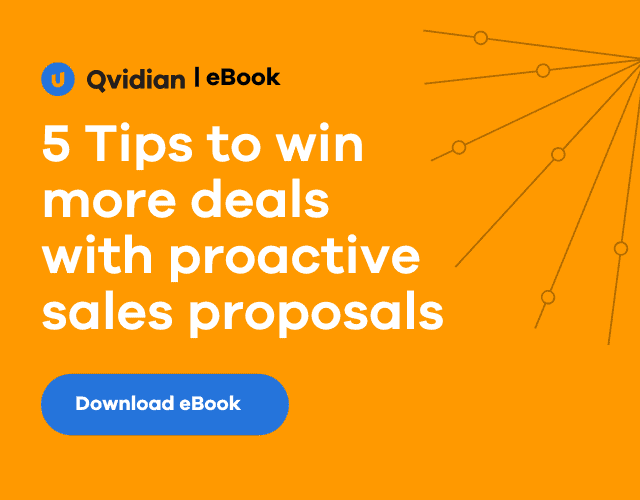Write proposals that win deals
Sales proposals are essential for winning new business. But poorly conceived and written proposals can undercut months of your sales efforts. Not to mention waste countless hours and resources. Concise, well-written proactive sales proposals are vital to winning deals. Unfortunately, the proposal development process is often a low priority for sales leadership and training.
You’re always racing against the competition and trying to beat the clock to deliver compelling proposals on time. Yet, you constantly run into bottlenecks and duplicate efforts, and getting colleagues to collaborate to deliver deal-winning content is like pulling teeth. We’re here to help.
To set you on the path to creating more persuasive sales proposals and compelling RFP responses, we’ve identified seven deadly sins that slow down processes and provided tips on how to avoid these sins. Let’s take a look…
1. Failing to qualify the deal
If you don’t know what your prospect needs, it’s impossible to align your products and services to effectively solve their problems.
Quick Tip: Spend time learning about the opportunity and how it came about. This is essential to deciding whether or not to pursue the bid.
2. Not focusing on what your prospect cares about
The first question buyers ask themselves when considering their options is: Are we getting what we need?
Quick Tip: It’s crucial to understand your buyer’s current issues and the problems they need to solve. This insight helps you zero in on making a case for your solution to their problems and how it will benefit them the most.
3. Not structuring your proposal persuasively
Your proposal content must be organized to persuade your prospect that you are the best-suited organization to solve their problems.
Quick Tip: Structure your proposal to highlight your key messages and the value you bring. 1) Summarize your understanding of your prospect’s challenges and needs. 2) Paint a picture of their desired outcome and how your solution will get them there. 3) Provide solution details and evidence that you can do the job on time and within budget.
4. Not differentiating your offer and company
Prospects need to be convinced that you provide superior value and differentiation. Without differentiators, your prospect may assume your product or service is a commodity and focus on purchasing the offering with the lowest cost.
Quick Tip: Lead with your strongest differentiators: your methodology, best practices, systems, and processes.
5. Not offering a compelling buyer-specific value proposition
Smart buyers want a positive impact on business performance that matters to them.
Quick Tip: Give your prospect evidence that your differentiators provide superior value. This can help seal the deal when prospects compare proposals.
6. Not making it understandable
Ensure your proposal is simple and easy to follow so your prospect reads it and doesn’t skim.
Quick Tip: Clearly emphasize your key points with appropriate formatting. Use simple headings, plain language, and a crisp sentence structure. Don’t use long, complex sentences or technical jargon because it will obscure your solution and company benefits.
7. Not editing for grammar, spelling, punctuation, and other mistakes
This final, seemingly innocuous sin can destroy your chances of winning and diminish your brand. Especially if your mistake is a credibility killer, like including the wrong company’s name.
Quick Tip: Use online editors for grammar, spelling, and punctuation. Review your proposal multiple times for other mistakes. Ask your team to proofread the proposal at various stages. This up-front work will speed up the proposal process as the deadline approaches.
Take your proposals to the next level
Any one of these seven deadly sins could trip you up and become the deciding factor in winning (or losing) the business, so be careful. If you’re looking for additional guidance about how to create persuasive sales proposals and compelling RFP responses, take a minute to check out Upland Qvidian.
More than 1,000 companies and 200,000 users worldwide trust Qvidian to automate away the tedious and frustrating parts of RFP response and proposal processes. With the time saved, you can dedicate more attention to fine-tuning and tailoring your proposals to be more effective and complete more RFP responses and sales proposals in the same amount of time—without expanding your team.
For more information or a tailored demo, don’t hesitate to contact a Qvidian RFP response and proposal expert.


